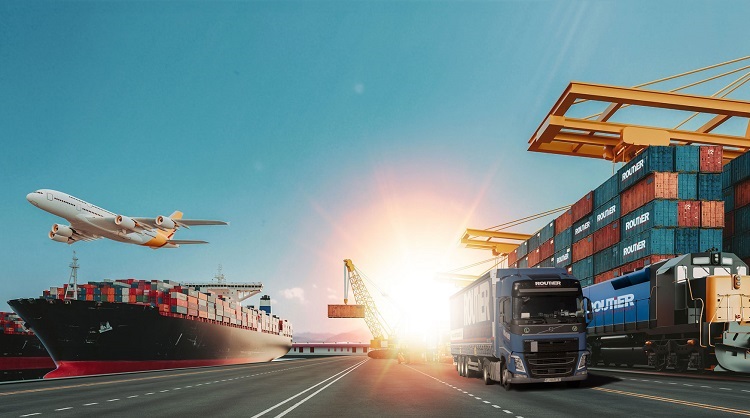Comprehensive Shipping Services: Ensuring Safe and Timely Deliveries for Businesses
Shipping services today are more crucial than ever, ensuring that goods reach their destinations safely and on time. Choosing the right shipping service can save businesses time, money, and a lot of headaches. Reliable shipping services not only enhance customer satisfaction but also boost a company’s reputation.
Understanding the intricacies of comprehensive shipping services can seem overwhelming, but it’s essential for smooth operations. Companies that invest in robust shipping solutions benefit from increased efficiency and better tracking of their packages. It’s all about delivering superior customer experience through precision and care.
Shipping providers offer a range of options tailored to different needs. Some services include air freight, sea freight, and ground transportation. Options may also include expedited shipping for urgent deliveries, ensuring customers receive their products swiftly. Selecting the right combination of services keeps businesses ahead in today’s competitive market.
Essential Components of Comprehensive Shipping Services
Comprehensive shipping services encompass several critical components, each playing a vital role in ensuring packages are delivered safely and on time. Effective logistics management, secure packaging solutions, and choosing the right transportation modes are key.
Logistics Management
Effective logistics management ensures that the entire shipping process runs smoothly. It involves planning, implementing, and controlling the efficient flow of goods from origin to destination.
- Route Optimization: Choosing the fastest and most cost-effective routes.
- Inventory Control: Keeping accurate records to avoid overstocking or shortages.
- Warehousing: Proper storage solutions to protect goods.
Coordinating between various stakeholders is crucial. Real-time tracking systems help maintain transparency and address issues quickly if they arise.
Packaging Solutions
Packaging plays a crucial role in protecting items during transit. Adequate packaging materials and methods can prevent damage and loss.
- Material Selection: Using sturdy materials like corrugated boxes or padded envelopes.
- Sealing Techniques: Securing packages with proper sealing methods to avoid tampering.
- Labeling: Clear, accurate labels to ensure correct handling and delivery.
Customized packaging solutions are also essential for unique or fragile items. This ensures that specific needs are met, thereby reducing the risk of damage.
Transportation Modes
Selecting the right transportation mode can significantly impact delivery times and costs. Depending on the destination, various modes such as air, sea, rail, or road may be employed.
- Air Freight: Ideal for urgent or high-value shipments.
- Sea Freight: Cost-effective for bulky and non-urgent cargo.
- Rail Transport: Suitable for long-distance inland transportation.
- Road Transport: Flexible and great for short to medium distances.
Balancing speed and cost is important. The choice of transportation mode often depends on the shipment’s urgency, size, and destination.
Operational Excellence in Deliveries
Effective deliveries rely on precise tracking systems, strict delivery protocols, and thorough quality assurance to maintain high standards and customer satisfaction.
Tracking Systems
Advanced tracking systems are essential for monitoring shipments. Utilizing GPS technology, these systems provide real-time updates to both the company and customers.
Key benefits include:
- Reduced delays: By identifying potential issues early, companies can reroute shipments.
- Enhanced transparency: Customers receive timely updates on the location and status of their package.
- Improved security: Tracking systems help prevent theft and loss by monitoring shipments closely.
Implementation of these systems requires investments in technology and training, but the benefits in efficiency and customer trust are substantial.
Delivery Protocols
Delivery protocols ensure that shipments are handled effectively from warehouse to customer.
Key practices include:
- Standardized procedures: Each step, from packaging to the final handoff, follows strict guidelines.
- Training: Drivers and handlers receive comprehensive training to manage goods carefully.
- Safety checks: Regular inspections and safety measures are in place to prevent damage and ensure that deliveries reach their destination intact.
Adhering to these protocols minimizes errors, enhances reliability, and keeps deliveries smooth and predictable.
Quality Assurance
Quality assurance encompasses various practices aimed at maintaining the integrity of the delivery process.
Inspections and audits are conducted regularly to ensure compliance with standards.
Customer feedback: Collecting and analyzing customer feedback can identify areas for improvement.
Continuous improvement: Regular updates to procedures and training programs ensure that the delivery process is consistently improving.
By maintaining stringent quality checks and encouraging continuous feedback, companies can enhance their service quality, leading to better customer satisfaction and loyalty.

